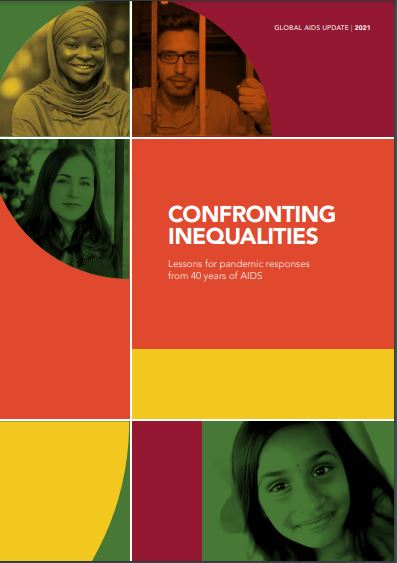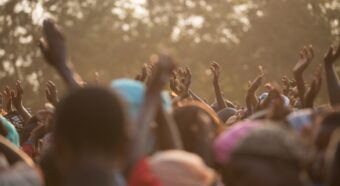We Need a Differentiated Approach to Fight HIV in Sub-Saharan Africa and Globally
- September 24, 2021
- Analysis
- By Armelle Nyobe
- Read in French

By Djesika Amendah
The Global Fund to fight HIV, TB and malaria invests 52% of its considerable resources, 14 billion of USD for three years, to fight HIV. HIV in sub-Saharan Africa is mostly young girls’ and women disease; thus, a high proportion of children are born with or infected in infancy in Africa.
Outside sub-Saharan Africa, HIV is mostly a man’s disease. Across the world, some groups like sex workers and their partners, Men who have Sex with Men (MSM), those who inject drugs (PWID) are disproportionately affected. Thus, preventing HIV, caring and treating those who live with HIV requires a differentiated approach. Such are the highlights of the UNAIDS( 2021)[1] report .
New HIV infections in sub-Saharan Africa and the rest of the world
In sub-Saharan Africa, adolescent girls and young women age 15-24 who are 10% of the population account for 25% of the new infections; women in the other reproductive age bracket, 25-49 years who are 15% of the population but represent 27% of the new infections. On the other hand, adolescent and young men age 15-24 who also represent 10% of the population account for 8% of the new infections; the older men 25-49 years old are 14% of the population but represent 19% of the new infections.
Figure 1: Distribution of new HIV infections and of the population, by age and sex in sub-Saharan Africa

Outside sub-Saharan Africa, the situation is quite different. Men aged 25-49yrs, who are 18% of the population represent 47% [2]of new infections, a difference of 19%. Younger men age 15-24yrs who are 8% of the population account for 13% of new infections. Older men and women, aged 50 and above are underrepresented in the new infections report.
Figure 2: Distribution of new HIV infections and of the population, by age and sex outside sub-Saharan Africa

Globally, new infections occur disproportionately among men age 25-49 who are 18% and account for 30% of new infections. Women age 25-49 who represent 17% of the global population account for 24% of new infections; Adolescent girls and young women who account for 18%, and men age 15-24 who account for 10% of new cases.
Figure 3: Global distribution of new HIV infections and of the population, by age and sex

Who lives with HIV in Africa and in the world – different key populations
Key populations are groups of people who are disproportionately affected by HIV. Usually, sex workers, men who have sex with men (MSM),[3] people who inject drugs (PWID), and transgender women are listed as key populations.
In the world outside sub-Saharan Africa, MSM are the single largest group with the highest numbers of HIV infections (45%), followed by PWID (20%), and clients/partners of sex workers (15%) and sex workers (10%).
Figure 4: distribution of people who live with HIV outside sub-Saharan Africa

In sub-Saharan Africa, the “remaining population” accounts for 61% of those who live with HIV. The second largest group of people who live with HIV (19%) are clients and partners of sex workers. They are often men. Sex workers are 12% of those who live with HIV, MSM 6%; PWID and transgender women represent 1% of PLHIV.
Figure 5: distribution of people who live with HIV outside sub-Saharan Africa and globally

Children with HIV
Considering HIV vertical transmission and its prevalence among people of reproductive age, a substantial number of children about 1.7 million live with HIV. Among them 46% are not under treatment. Half of the new HIV infection in children are only in seven countries in Africa: Nigeria (14%), Mozambique and South Africa (8% each), Tanzania (7%), Democratic Republic of Congo (6%), Zambia (5%) and Uganda (3%).
Those countries are striking for the variety of HIV prevalence and their population size. Nigeria has a population above 210 million and HIV prevalence of 1.4%; in contrast, South Africa has a much lower population than Nigeria (60 million) but a much higher HIV prevalence of 19%.
Figure 6: Distribution of pregnant women who are not on treatment, by region 2020

As the Global Fund develops its next strategy, and countries implement the new grants, the UNAIDS reports makes it clear that fighting HIV[4] in the world is not a one-size-fits-all. Rather, the approach should closely be linked to the epidemic in the specific country and in the region.
It appears that in sub-Saharan African, fighting HIV requires a stronger focus on prevention among AGYW, women of reproductive age and men who are clients/partners of sex workers even as we focus on key populations. The prevention and early diagnosis efforts should find them the people at risk and the PLHIV where they are. The head of Nigeria Aids Control discussed. As HIV is essentially a disease is transmitted through heterosexual relations in sub-Saharan Africa, thousands of children are born with HIV or contract the disease through breastfeeding. Finding their mothers early would prevent this situation. In addition, those children who live with HIV should be found in a manner that respect their human rights so they receive the care they need.
[1] UNAIDS( 2021) confronting inequalities, lessons from 40 years of AIDS
[2] UNAIDS( 2021) confronting inequalities, lessons from 40 years of AIDS
[3] UNAIDS( 2021) confronting inequalities, lessons from 40 years of AIDS
[4] UNAIDS( 2021) confronting inequalities, lessons from 40 years of AIDS


